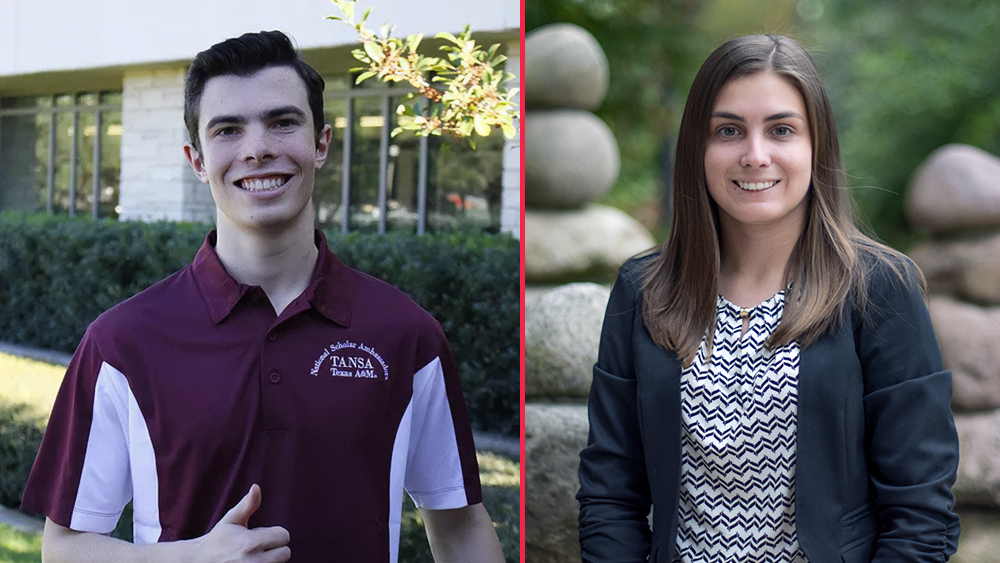
Two Texas A&M University former students from the Department of Materials Science and Engineering are continuing their success past their undergraduate years.
Haley Jones and Victor Vogt, who are now working toward their doctoral degrees, earned memberships to the National Science Foundation (NSF) through the Graduate Research Fellowship Program (GRFP), announced to each in an email on March 29.
The fellowship program is funded by NSF and is considered one of the most academically prestigious awards that a graduate student can earn. GRFP consists of a five-year period where for three of those years, participants are funded for personal research.
NSF provides funding for students to study for and complete a Ph.D. program. There are two writing stages in the application process. The first is a personal statement that focuses more on the student’s relevant background and future goals.
This is followed by a research statement that proposes a fundamental and scientifically sound project that the student works on during the award period. The research statement also includes intellectual merit and broader impact discussion.
The award’s funds include $37,000 for yearly stipends and an additional $12,000 toward the student’s academic tuition for each year of the three-year funded period.
“It’s nice from the student’s perspective because all the projects I’m working on are funded by the Department of Energy in collaboration with the university, and that money pays my tuition and salary. It also pays for my experiments and materials,” Vogt said.
As part of his research in GRFP, Vogt proposed to explore novel ways to carry out the Fischer-Tropsch synthesis, a chemical process that converts carbon monoxide into more useful hydrocarbons, such as fuels or commodity chemicals.
“Materials science just called to me because it combined everything that I loved. I am very excited about it, and now I am working toward a Ph.D. in it,” Jones said.
She joined the materials science and engineering department in the first undergraduate cohort and was an undergraduate research assistant under Dr. Patrick Shamberger up until her graduation. She also earned the Materials Science Department Outstanding Researcher Award.
“The NSF fellowship gives you a lot of freedom in your research. You don’t have to worry about working as a teaching assistant or graduate assistant on a certain project, and you have more control over your research project because of the funding,” Jones said.
Although Jones does not plan on staying in academia and has a burning passion for the industry, she believes the award and funds will help her tremendously with future work, giving her freedom to work in other facilities, whether they be national labs or industrial labs.
Vogt originally planned to study chemical engineering, but the thought of moving to materials science lingered on. He got to know Shamberger and other faculty members who helped him decide that materials science and engineering better aligned with his interests.
He said the funding from NSF gives him more flexibility to pursue potentially different research directions. “We have projects in our group that have kind of established funding from the Department of Energy, for example, but it’s to work on a fixed project.”
“It felt kind of validating because I’d really put a lot of work into the application,” he said. “I’m grateful for all the help I received from the materials science and engineering department at Texas A&M.”